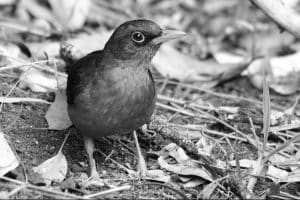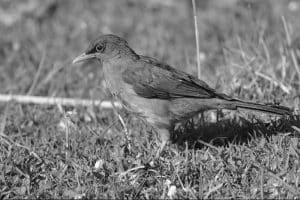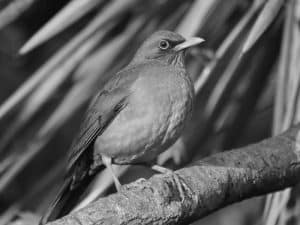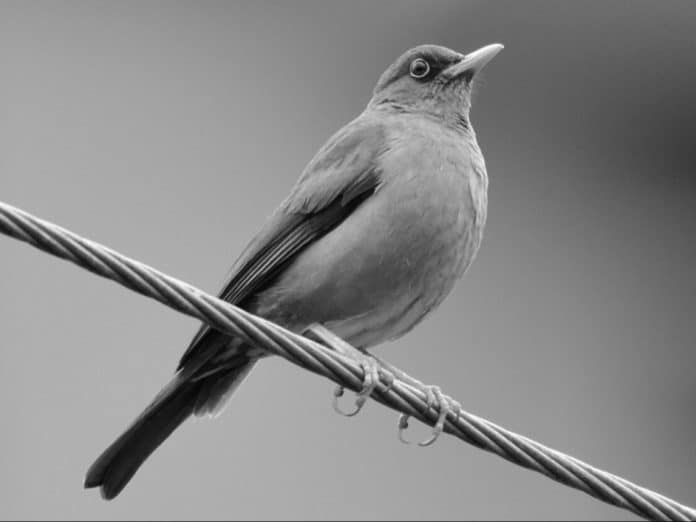Introduction to the Abyssinian Thrush
The Abyssinian Thrush, scientifically known as Turdus abyssinicus, is a remarkable bird species found in the breathtaking landscapes of Tanzania. With its unique characteristics and behavior, The abyssinian thrush in Tanzania has become a hidden treasure for bird enthusiasts and nature lovers alike. Tanzania’s diverse habitats provide the perfect environment for the Abyssinian Thrush to thrive, making it a prime destination for birdwatchers and photographers.
Habitat and Distribution of the Abyssinian Thrush in Tanzania

The Abyssinian Thrush is predominantly found in the highland forests of Tanzania. These forests, characterized by their lush greenery and rich biodiversity, offer a suitable habitat for this species. The bird is also known to inhabit montane grasslands and moist woodlands, adding to its versatility in adapting to different environments.
In terms of distribution, the Abyssinian Thrush is endemic to East Africa, with Tanzania being one of its primary range countries. Within Tanzania, this bird can be spotted in various national parks and reserves, including the famous Mount Kilimanjaro National Park, the Ngorongoro Conservation Area, and the Udzungwa Mountains National Park. These locations not only offer a chance to glimpse the Abyssinian Thrush but also provide stunning landscapes that enhance the birdwatching experience.
Physical Characteristics and Behavior of the Abyssinian Thrush
The Abyssinian Thrush is a medium-sized bird, measuring around 20 centimeters in length. It has a distinctive plumage, with a dark brown body and a pale grey or white belly. The male and female birds share similar appearances, making it challenging to differentiate between them.
This species is known for its melodious song, which consists of a series of rich, flute-like notes. The Abyssinian Thrush is primarily insectivorous, feeding on a variety of insects, worms, and berries. It is an expert forager, often seen hopping on the forest floor in search of its next meal. Despite being a shy bird, it occasionally exhibits territorial behavior during breeding season, defending its nesting site from intruders.
Importance of Tanzania’s Landscapes for the Abyssinian Thrush
Tanzania’s landscapes play a crucial role in supporting the population of the Abyssinian Thrush. The country’s highland forests provide a suitable breeding ground and nesting habitat for these birds. The dense vegetation offers protection from predators and creates an ideal environment for raising their young.
Additionally, the presence of diverse plant species in Tanzania’s landscapes ensures a constant food supply for the Abyssinian Thrush. The bird’s diet consists of insects and berries, which are abundantly available in the forests and grasslands. This ecological balance contributes to the overall health and survival of the species.
Conservation Efforts for the Abyssinian Thrush in Tanzania

Recognizing the importance of preserving the Abyssinian Thrush and its habitat, Tanzania has implemented several conservation measures. The government, in collaboration with local and international organizations, has established protected areas to safeguard the bird’s natural habitat.
Efforts are also being made to raise awareness among local communities about the importance of conservation. Community-based initiatives, such as birdwatching tours and eco-tourism projects, provide alternative livelihoods while promoting the preservation of the Abyssinian Thrush and its environment.
Best Locations for Birdwatching and Spotting the Abyssinian Thrush in Tanzania
For avid birdwatchers and nature enthusiasts, Tanzania offers a plethora of locations to spot the Abyssinian Thrush. Some of the best places include:
- Mount Kilimanjaro National Park: The montane forests of this iconic park are home to the Abyssinian Thrush, along with a wide range of other bird species.
- Ngorongoro Conservation Area: This UNESCO World Heritage Site not only boasts stunning landscapes but also provides a habitat for the Abyssinian Thrush and numerous other avian species.
- Udzungwa Mountains National Park: Known as the “Galapagos of Africa,” this park is a haven for biodiversity, making it an excellent spot for birdwatching. The Abyssinian Thrush can be spotted among the vibrant flora and fauna.
Tips for Photographing the Abyssinian Thrush in its Natural Habitat
Capturing stunning photographs of the Abyssinian Thrush requires patience, skill, and knowledge of its behavior. Here are some tips to enhance your photography experience:
- Research and observe: Spend time studying the bird’s behavior and habitat to understand its patterns and movements. This will help you anticipate its actions and capture unique moments.
- Use appropriate equipment: Invest in a good quality telephoto lens to capture the Abyssinian Thrush from a distance without disturbing its natural behavior. A tripod can also be beneficial for stability.
- Be mindful of lighting: Take advantage of natural light to highlight the bird’s features. Avoid harsh midday lighting and opt for early morning or late afternoon when the light is soft and warm.
Other Bird Species Found in Tanzania’s Breathtaking Landscapes
In addition to the Abyssinian Thrush, Tanzania is home to a remarkable array of bird species. The country’s landscapes offer a habitat for over 1,000 bird species, making it a paradise for birdwatchers. Some notable species include the African Fish Eagle, Lilac-breasted Roller, Grey Crowned Crane, and the iconic Maasai Ostrich.
Planning Your Abyssinian Thrush Birdwatching Trip to Tanzania
To make the most of your Abyssinian Thrush birdwatching trip to Tanzania, consider the following:
- Research the best time to visit: Different seasons offer varying birdwatching opportunities. Plan your trip during the dry season (June to October) when the bird activity is at its peak.
- Hire a local guide: Engaging a knowledgeable local guide can greatly enhance your birdwatching experience. They can help you navigate the landscapes and spot elusive species like the Abyssinian Thrush.
- Pack essential gear: Bring appropriate clothing, binoculars, a field guide, insect repellent, and a camera to fully enjoy your birdwatching adventure.
Conclusion: A Must-Visit Destination for Bird Enthusiasts and Nature Lovers

Tanzania’s breathtaking landscapes and the presence of the Abyssinian Thrush make it a must-visit destination for bird enthusiasts and nature lovers. With its unique characteristics, melodious song, and stunning plumage, the Abyssinian Thrush is a true hidden treasure waiting to be discovered. By appreciating and preserving its habitat, we can ensure the continued existence of this remarkable bird species for generations to come.


































